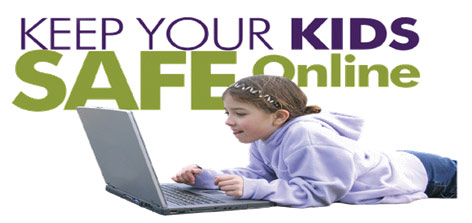Cyber Safety for Teachers
We know, as do our children, that the internet is a door to a world of fantastic resources. It is also a ready source of entertainment and information—a place to get authoritative (and suspect) opinion, help, comments and ratings of the coolest, latest computer games or video cards for computers.It is also now a fundamental resource and educational tool students use for projects, assignments and investigations across all key learning areas and the entire student body. But the internet, as we know, does not come without its risks. Helping children have positiveonlineexperiences requiressoundsupport andeducation—not only byteachersbut also byparents,careers andlibrary staff.
There are some netiquettes you need to follow:
In any society there are certain manners or code of conduct people are expected to observe. The same is true on the Internet. When youuse the Internet, you are a citizen of cyberspace, a community of people all around theworld who are connected through the Internet. “Netiquette” is the term used to refer tothe do’s and don’ts when communicating on the Internet, which includes the variousavenues of social media. It covers both common courtesy and the informal rules ofcyberspace. In other words, netiquette refers to the rules for behaving properly online!
When followed, these rules ensure a safe environment for all. Following are some of themost common rules of netiquette for middle and high school students. They come froman article called “Netiquette: Rules of Behavior on the Internet.”
- Identify yourself. Begin with a greeting and end with your name
- Include a subject line. This is a descriptive phrase that gives the topic of your message.
- Avoid sarcasm (cutting remarks). They can very easily be misinterpreted!
- Respect the privacy (and time) of others. Do not quote or forward email without the original owner's permission. Be sure what you are saying is worth the time it takes to read and respond. Also remember that there are appropriate times and places for online communication. When you are in class is not necessarily one of them!
- Acknowledge and return messages promptly.
- Copy (cc) with caution. Only copy people who need to know the information.
- No spam or junk mail. This includes sending or responding to "chain letters." Sometimes these are just a way to get a list of valid emails that people then sell to others.
- Be concise. Try to keep your messages to one screen in length.
- Use appropriate language. Avoid coarse, rough, rude, abusive language. Be sure to use correct grammar and spelling! It does make a difference. Also be careful when you use symbols and abbreviations. They may not mean the same thing to everyone. Also, do not use ALL CAPS! This means you are shouting.
- Use appropriate emoticons (emotion icons) to help convey meaning. Text cannot convey the nonverbal clues we give when speaking directly to another person. The use of "smileys" can help. Use them sparingly, however, and be sure to use ones that other people recognize! The most common ones are as follows:
:-) means you are happy
;-) means you are making a joke
:-( means you are sad.
Private and Personal Information
- Some web sites request information before allowing you to participate in anonline activity
- Stop and consider how providing suchinformation may affect your personal safety
- You can stay safe and have fun too
Private Identity Information
Stop and think, am I being asked to giveout information that revels who I am or where I can be found.
What's Private Identity Information

- Full (first and last) name
- Postal address
- Name of school
- School address
- E-mail address
- number
- Passwords
- Calling card number
- Credit card number
- Social security number
- Mothers maiden name
- Parent's place of work
- Photo's in which you can Recognized
Hence It's OK to share information about yourself, your family, and friends that cannot be used to identify you or them. For eg: •
- Your age
- Whether you are male or female
- How many brothers and sisters you have
- Your favorite band
- Your favorite food
- How many pets you have
- The name of your pet
- Your opinion about an important issue
Dealing with online Bullies:
While going online can be fun, some onlineexperiences may make you feel embarrassed,upset, depressed, or afraid.Usually online bullying does not crossover into real life, but it can. Either way,it can be upsetting.
Bullying should not be tolerated
Here’s what to do about it.
- Sign off the computer
- Leave the chat room or web site
- Block the bully's messages
- Save and print the bully's e-mails or the message logs.
- Never reply to a bully.
- Talk over how to handle the situation with a friend.
- Report your experiences to a parent, teacher, or other trusted adult.
Smart E-mailing
- When opening your e-mail, always check to see who it is from first.
- Don't reply to SPAM
- If contacted by a stranger, DON"T reply
- Some E-mails may contain viruses. Never download a file unless you are expecting one
- If you receive a message that makes you feel uncomfortable, Print the message and show it to a parent or guardian.

Hence its necessary to educate your self towards the cyber theft then train the school kids about it.
